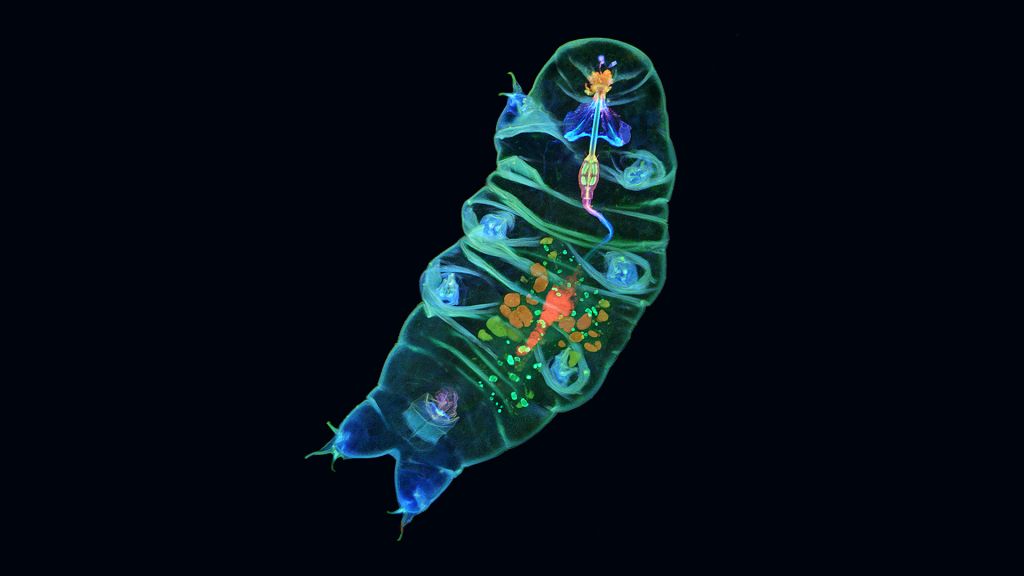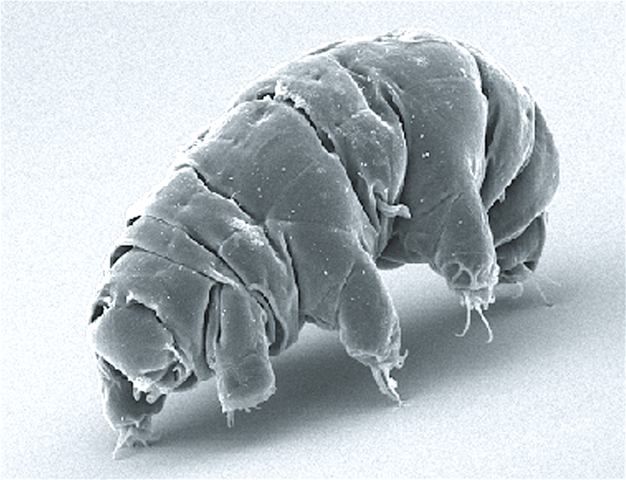 Last month, a picture of a microorganism with neon lights showing the different internal organs made it to the final list of a photography competition.
Last month, a picture of a microorganism with neon lights showing the different internal organs made it to the final list of a photography competition.
The Olympus Image of the Year award is presented every year to “the best in life science imaging worldwide.” In other words, the award recognizes the most stunning photographs of microscopic nature.
The picture was taken by the University of Maryland, Baltimore County biologist Tagide deCarvalho, and shows a plump creature with pudgy arms and legs! While it failed to win the top spot, it certainly captured the world's attention.
What Is This Creature?
Tardigrades may be tiny creatures that only grow up to a millimeter in length, but they are also one of the most resilient animals on Earth!
These microscopic “water bears” are actually a phylum (Tardigrada), or a broad category of eight-legged, segmented animals, that contains over 1,000 known species. In comparison, humans are part of the phylum Chordata, which includes well-known vertebrates from tigers to salmon.
Tardigrades are mostly transparent by nature, but with the help of fluorescent dyes, deCarvalho created a colorful masterpiece of one of these critters. "I'm excited about this image because the fluorescent dyes I used allow you to see the tardigrade digestive tract, including the mouthparts and stomach filled with food," she said in a UMBC news post.

True Survivors!
One of the most unique features of tardigrades is its ability to live in almost any environment. According to the Smithsonian magazine, tardigrades can sustain themselves in climates as cold as -328ºF (-200ºC) or as hot as 300ºF (148.9ºC)!
They can even thrive in boiling liquids, massive amounts of radiation, and the deepest parts of space thanks to their ability to withstand large amounts of pressure!
Tardigrades can survive harsh conditions simply by rolling up into a ball. In a process known as cryptobiosis, tardigrades curl into a death-like state called a tun, which stops almost all of their vital body mechanisms. During this period of inactivity, the bodies of tardigrades produce antioxidants and proteins that protect their internal organs and DNA.
Due to their amazing survival abilities, scientists believe that tardigrades could even outlive humans. David Sloan, a co-author of a study about tardigrades at Oxford, said, “To our surprise, we found that although nearby supernovas or large asteroid impacts would be catastrophic for people, tardigrades could be unaffected.”
As time goes on, scientists hope they can learn more about these indestructible microorganisms and their fascinating survival skills.
Sources: Live Science, Vox, Smithsonian Magazine








